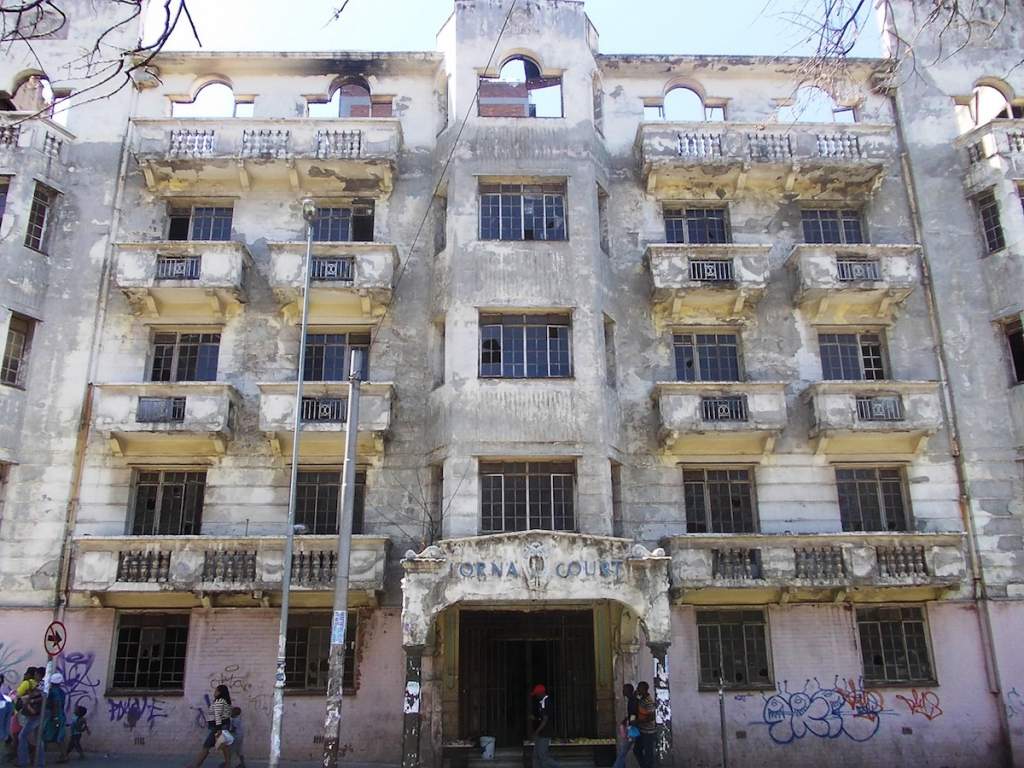“In the 1970s, Ponte was the place to live in Johannesburg, which people here called the New York City of Africa. It was on the edge of Hillbrow, a bustling, cosmopolitan neighbourhood of artists and intellectuals, where cafes and bookshops stayed open late and where, even under the tight rule of apartheid, interracial mixing was common.” – Stephen Hanes, Christian Science Monitor, 2008.
This was a picture of Johannesburg as it was then. Today, this image given above does not apply to this city. Property in Johannesburg is now mostly run down, with streams caused by endless leaks in the underground water infrastructure and blocked storm drains.
Overall, Johannesburg’s Central Business District (CBD) is a mess covered with garbage and litter. A fact that the government and some in the mainstream media blame squarely on migrants and immigrants living in the inner city.
In 2018, Omogolo Taunyane, then Mayoral Spokesperson of former Johannesburg Mayor Herman Mashaba, said that there were 432 ‘hijacked’ buildings in the city. This number was exponentially higher than the 12 hijacked buildings confirmed by the Department of Community Safety in Gauteng, on 6 August 2009.
As highlighted before, the discourse on hijacked buildings is usually linked to the phenomenon of undocumented persons being responsible for taking over these buildings in the inner city. Therefore, during his tenure as mayor, Mashaba had proposed to expropriate all the buildings that are classified as hijacked, turning them over to private property developers at a fraction of their real cost.
However, in reality, arguably the question of hijacked buildings is not as simple as, “illegal foreigners hijack buildings.” A common sentiment heard from movements like #OperationDudula.
The phenomenon of increased hijacked buildings can arguably be blamed on a combination of factors including the urban housing crisis, high rates of unemployment, organised crime, and weak law enforcement. Another important factor being that some ‘hijacked’ buildings are not actually hijacked. They just happen to fall into disuse after years of standing in the inner city neglected.
More than just in the CBD, this phenomenon extends to nearby suburbs of Johannesburg: from Hillbrow, Berea, and Yeoville, to Bertrams, Troyville, Rosettenville, and Bezuidenhout Valley.
People who cannot afford to stay in expensive apartments and who are struggling to make a living, turn to those buildings for shelter. It is after a community forms in a building that it joins the ever-growing list of hijacked buildings where it was abandoned.
Many of the buildings in the list of hijacked buildings are not fit for human occupation. The lights and the lifts are usually not working. The buildings are not maintained, and maybe have not been since the dawn of South Africa’s democracy.
Outside of politics and a housing deficit. Financially, according to different sources, in the 1990s, South Africa’s biggest banks, namely Absa, Nedbank, Standard Bank and First National Bank, started redlining the inner city.
Redlining is the practice of drawing a red line on a map to decide which areas will not be issued loans to maintain sectioned properties known as grey areas.
Authors of Racial Desegregation and The Origin Slums in Johannesburg Inner City, Owen Crankshaw and Caroline White say that slums in Johannesburg’s inner city and consequently the slumlords arose out of racist principles applied by the banks to redline the area. They found evidence of redlining targeting the inner city, which they said was due to, “allowing non-whites to live in the inner-city of Johannesburg contributed to the redlining of the grey areas by financial institutions before the new interracial and democratic government of 1994.”
Case in point, another study in 1991 by the Human Sciences Research Council (HSRC) found that, “redlining in greater Johannesburg was dominant in Hillbrow, Berea, Joubert Park and the CBD (central business district) residential, which are all within the inner-city boundaries of Johannesburg.”
Since then however, Absa has reportedly stopped practicing the principle of redlining the inner city in the mid-2000s by granting the Johannesburg Housing Company (JHC) loans to help with gentrification projects in the inner city.
But this has in turn led to a further housing crisis, as some people have resorted to staying in buildings taken over by syndicates.
This article is an opinion piece submitted on 18 May 2023. The views expressed by the author do not necessarily reflect those of Karibu! Online or Khanya College. You may republish this article, so long as you credit the authors and Karibu! Online (www.Karibu.org.za), and do not change the text. Please include a link back to the original article.


 Download PDF
Download PDF
